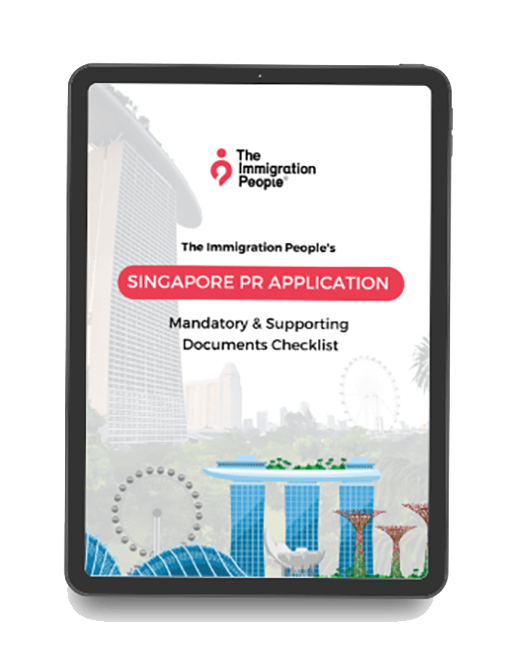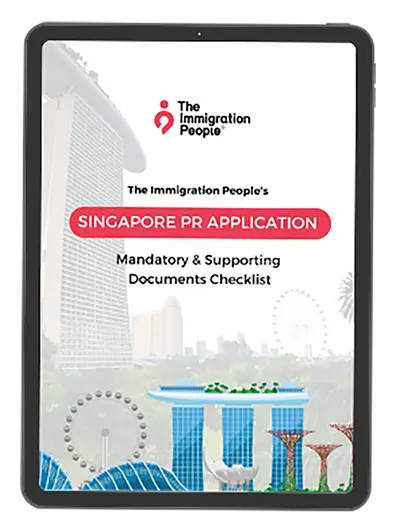When considering relocation, the choice between Singapore and Malaysia presents a compelling dilemma due to their unique attributes and similarities.
Both nations offer a range of opportunities and lifestyles to potential immigrants, which necessitates a thorough comparison to determine the best fit for one's personal and professional objectives.
Here are many of the frequently asked questions by expatriates:
Quick FAQ: Singapore vs Malaysia - Which Country Should I Immigrate to?
1. What are the key differences in the job market between Singapore and Malaysia?
Singapore's job market is focused on finance, technology, and services, demanding high-skilled and innovation-driven roles. Malaysia's market offers diverse opportunities in manufacturing, services, and emerging technology sectors, with a growing demand for tech skills.
2. How does the cost of living in Singapore compare to Malaysia?
The cost of living in Singapore is generally higher than in Malaysia. This includes housing, groceries, healthcare, and shopping expenses. Singapore's stronger currency, the SGD, has more buying power than the Malaysian Ringgit (MYR). The currency difference is now SGD 1 to MYR 3.53. The strong Singapore currency is also a reason why so many Malaysians choose to work in Singapore.
3. What are the political and economic landscapes like in Singapore and Malaysia?
Singapore is known for its stable political climate and strong legal framework under the governance of the People's Action Party (PAP). It has a high-income economy with key sectors in finance, manufacturing, and trade. Malaysia has a more complex political scene with a parliamentary democracy and a constitutional monarchy. Its economy is diverse with contributions from agriculture, industry, and services sectors.
4. Can you compare the quality of life in both Singapore and Malaysia?
Comparing the quality of life between Singapore and Malaysia is complex, as individual preferences and priorities heavily influence individual experiences. While both nations boast economic prosperity and cultural diversity, they offer distinct living environments. Singapore, known for its efficiency and cleanliness, excels in aspects like public transportation, safety, and career opportunities. However, the high cost of living and fast-paced environment might not suit everyone. Conversely, Malaysia offers a more laid-back lifestyle with lower living costs and abundant natural beauty. However, its infrastructural development and public services might not be as developed as Singapore's. Ultimately, the "better" quality of life depends on individual priorities and what aspects hold the most weight in shaping personal satisfaction.
5. What should I know about the business environment in Singapore and Malaysia?
Singapore has a very supportive environment for businesses, with a high ranking in the World Bank's ease of doing business. The country offers various incentives for start-ups and foreign companies. Malaysia is improving its business environment with initiatives for sectors like technology and green energy, though it involves more bureaucratic processes.
Which Country Should I Pick: Factors That Affect Expat Choices
Migration decisions are influenced by various factors including economic stability, quality of life, employment opportunities, education, healthcare, and social and cultural dynamics.
Expanding from our frequently asked questions, here is our investigative take on each country's pros and cons from different lenses.
1. Employment Opportunities
Exploring employment opportunities is vital when considering immigration. Prospects in Singapore and Malaysia offer distinct environments for foreign workers, with varying emphasis on sectors such as technology and skill requirements.
Job Market Overview
In Singapore, the job market is renowned for its robustness, particularly in finance, technology, and services. They provide a competitive landscape with a high demand for skilled professionals. The government's focus on innovation and technology makes it a hub for IT and fintech roles.
Key skills in Singapore: Finance, Technology, Services High-skilled, Innovation-driven
Malaysia, on the other hand, offers a diverse job market with opportunities in manufacturing, services, and an emerging technology sector. The cost of living is lower compared to Singapore, which can be an advantage for those starting their careers or looking for more affordability.
Key skills in Singapore: Manufacturing, Services, Emerging Tech Diverse skill set, Growing demand for tech skills
Career Progression
Singapore's career landscape is dynamic, providing ample room for career advancement, especially for those with expertise in niche areas. The nation's meritocratic system often leads to clear pathways for progress for individuals demonstrating high competency levels.
In contrast, Malaysia presents a broader spectrum of career progression opportunities. There is significant growth potential in various sectors, including technology and domestic enterprises. The career trajectory may vary more compared to Singapore, but the environment lends itself to entrepreneurial ventures and expansive skill development.
2. Living Standards and Cost of Living
Deciding between immigration to Singapore or Malaysia involves understanding the living standards and cost of living in each country. Both offer distinct advantages, with Singapore renowned for its high living standards and Malaysia for its affordability.
Cost of Living Comparison
The cost of living in Singapore is generally higher when compared to Malaysia. The Singapore Dollar (SGD) tends to have stronger buying power than the Malaysian Ringgit (MYR), reflecting the economic differences between the two nations.
- Housing: In Singapore, property prices and rentals are relatively expensive, driven by limited land space and high demand. Malaysia offers more affordable housing options, with the added benefit of larger living spaces for a fraction of the cost.
- Groceries: When shopping for groceries, prices in Singapore are higher. Consumers in Malaysia often enjoy lower prices for fresh produce and local products.
- Healthcare: Both countries provide quality healthcare services, yet healthcare in Singapore is more costly than in Malaysia, albeit Singapore's healthcare system is often ranked among the top globally.
- Shopping: Retail prices, for both local and imported goods, are generally steeper in Singapore than in Malaysia.
Quality of Life
The standard of living in both Singapore and Malaysia offers unique advantages.
- Singapore boasts a highly efficient public transport system, excellent infrastructure, and a robust economy, contributing to its high standards. The city-state consistently ranks highly in safety and cleanliness.
- Malaysia offers a relaxed pace of life, with access to natural landscapes, beaches, and cultural diversity that enhances the living experience. The country provides a good balance for those looking for a quality of life without the intensity of a fast-paced city.
3. Political and Economic Landscape
The political and economic landscape of Singapore and Malaysia is critical for prospective immigrants. These two nations offer distinct opportunities and challenges within the Asian region, affecting their position in the global economy.
Economic Overview
Singapore: A high-income economy, Singapore boasts a GDP per capita of approximately $65,233 (as of 2023), ranking it amongst the wealthiest in Asia. Its economy is highly diversified, with key sectors including finance, manufacturing, and trade. Known for its status as a global financial hub, Singapore attracts substantial foreign investment, reflected in its high Global Competitiveness Index ranking.
Main Economic Indicators:
- GDP per capita: $65,233
- Global Competitiveness Index Ranking: High
- Key Sectors: Finance, Manufacturing, Trade
Malaysia: In contrast, Malaysia's economy, classified as upper-middle income, has a GDP per capita of around $11,414. Its economy is also diverse, with notable contributions from the agriculture, industry, and services sectors. Malaysia is part of the ASEAN Free Trade Area, which helps facilitate trade and investment flows within Southeast Asia.
Main Economic Indicators:
- GDP per capita: $11,414
- ASEAN Free Trade Area Member
- Key Sectors: Agriculture, Industry, Services
Political Stability
Singapore: Singapore is recognised for its stable political climate, underpinned by the long-standing governance of the People's Action Party (PAP). The country's legal and regulatory framework is firmly established, fostering a conducive environment for business and investment. This may make immigration policies stable and predictable.
Location and Climate
- Governing Party: People's Action Party (PAP)
- Legal Framework: Strong
- Business Environment: Conducive
Malaysia: Malaysia has a more complex political scene, with shifts in power between coalitions reflecting a vibrant but less predictable landscape. The country practices parliamentary democracy and constitutional monarchy. While Malaysia has experienced political turbulence, it maintains a functional democracy and an active civil society. This may make immigration policies unstable and unpredictable.
Political Attributes:
- Government System: Parliamentary Democracy and Constitutional Monarchy
- Recent Political Shifts: Noticeable
- Civil Society: Active
4. Geographical and Climatic Comparison
When considering immigration to either Singapore or Malaysia, It is essential to assess the geographical and climatic differences between the two countries located in Southeast Asia. These factors can significantly affect daily life and personal comfort.
Location and Climate
Singapore is an island city-state situated just off the southern tip of the Malay Peninsula. It lies one degree (137 kilometres) north of the Equator. The climate is tropical rainforest, with no distinctive seasons, uniform temperature, and high humidity all year round. Singapore's proximity to the ocean moderates its climate, which is marked by two monsoon seasons; the Northeast Monsoon from December to March, and the Southwest Monsoon from June to September.
Malaysia is divided into two regions: Peninsular Malaysia and East Malaysia, separated by the South China Sea. The country has a tropical rainforest climate as well, with higher variation in rainfall depending on the region. While also hot and humid throughout the year, it experiences more pronounced monsoon seasons. The East Coast of Peninsular Malaysia is heavily affected by the Northeast Monsoon, leading to significant rainfall from November to February.
Environmental Quality
Singapore prides itself on its urban environmental management. Despite its dense population, the country has high standards of air and water quality, owing to strict environmental regulations. It is often noted for its extensive greening efforts and the cleanliness of its urban environment.
In contrast, Malaysia offers a mix of urban and rural environments. Environmental quality can vary: cities such as Kuala Lumpur may encounter issues like air pollution, particularly during periods of illegal forest burning in nearby regions. However, rural and less developed areas in Malaysia can provide a very clean and natural environment, especially in places distant from industrial activities.
5. Expatriate Community and Support
Choosing between Singapore and Malaysia for immigration largely depends on the individual's preferences regarding the expatriate community and the support systems in place.
Expat Population
In Singapore, the expatriate community is quite substantial, making up around 29% of the population. This includes a diverse array of nationalities with a predominance of individuals from Malaysia, China, India, and Western countries. The presence of multiple international schools and expatriate clubs facilitates a connected and supportive environment for new arrivals.
In contrast, Malaysia is known for its 'Malaysia My Second Home' (MM2H) programme, which has drawn a considerable number of long-term foreign residents. The expatriate population in Malaysia is varied, with a significant number of expats hailing from ASEAN countries, Europe, and the Commonwealth. Kuala Lumpur particularly has a robust expatriate scene, with many communities providing a network for support and integration.
Which Country Should I Pick?
Choosing between Singapore and Malaysia for immigration depends on your personal and professional priorities.
If you prioritise a dynamic, high-skilled job market, a robust business environment, and high living standards, despite higher costs, Singapore is a compelling choice.
Its stable political climate, world-class infrastructure, and strategic position as a global financial hub make it ideal for professionals and entrepreneurs in finance, technology, and innovation-driven sectors.
On the other hand, if you prefer a more affordable cost of living, a diverse cultural landscape, and opportunities in emerging technology and manufacturing sectors, Malaysia could be more suitable.
Its growing economy, varied job market, and the balance of urban and natural living environments offer a different but rewarding experience. Your decision should align with your career goals, lifestyle preferences, and financial considerations.
Frequently Asked Questions about Singapore vs Malaysia: Which Country Should I Immigrate To?
Are there differences in the taxation systems between Singapore and Malaysia?
Singapore offers one of the lowest corporate tax rates in the world, with various tax incentives for businesses. Malaysia also has competitive tax rates and incentives, especially for high-technology and export-oriented industries, though the tax structure can be more complex.
How does investor protection and economic freedom in Singapore compare to Malaysia?
Singapore is known for strong investor protection and high levels of economic freedom, contributing to its status as a global financial hub. Malaysia, while also providing investor protection, has a slightly less open economic landscape but is part of the ASEAN Free Trade Area, facilitating regional trade and investment.
What is the environmental quality like in Singapore compared to Malaysia?
Singapore, despite its dense population, maintains high standards of air and water quality and is known for its greening efforts. Malaysia offers a mix of urban and rural environments, with variable environmental quality, especially in cities like Kuala Lumpur.
What are the language and cultural barriers for immigrants in Singapore and Malaysia?
Singapore, with its four official languages including English, presents fewer language barriers for Western immigrants. Malaysia's official language is Malay, but English is widely spoken. Both countries have rich cultural diversity, which can be both an opportunity and a challenge for new immigrants.


